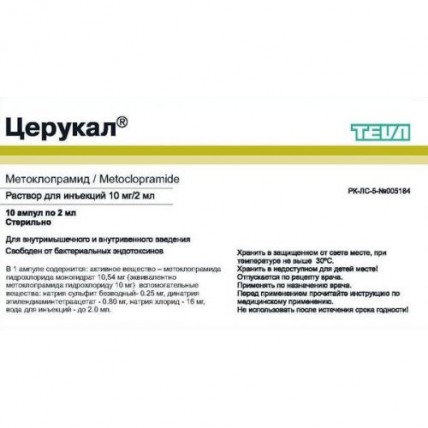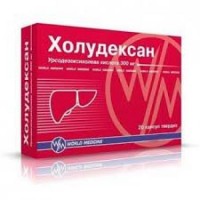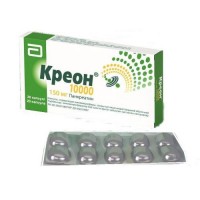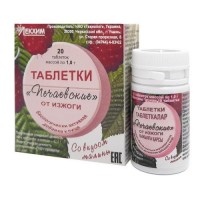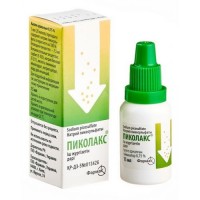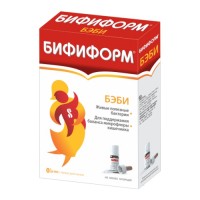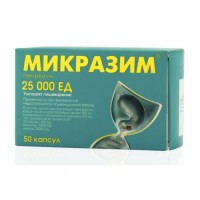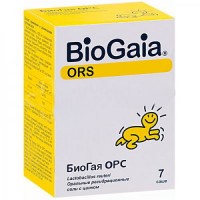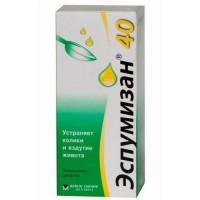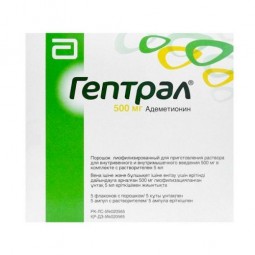Reglan 10 mg / 2 ml 10s solution for injection in ampoules
- $31.60
The instruction for medical use of medicine Cerucal the Trade name Cerucal the International unlicensed name Metoclopramidum Dosage Form Solution for injections of 10 mg / 2 ml Structure One ampoule contains active agent - Metoclopramidum of a hydrochloride of 10 mg (it is equivalent Metoclopramidum of a hydrochloride of monohydrate of 10.54 mg), excipients: sodium sulfite anhydrous, dinatrium ethylene diamine tetraacetate, sodium chloride, water for injections. Description Transparent colourless liquid. Pharmacotherapeutic group Drugs for treatment of functional disorders of digestive tract. Stimulators of motility of digestive tract. Metoclopramidum. The ATX A03FA01 code the Pharmacological Pharmacokinetics Volume properties of distribution makes 2.2 - 3.4 l/kg. It is metabolized in a liver. Elimination half-life makes from 3rd to 5 hours, in chronic kidney disease - 14 hours. It is removed by kidneys within the first 24 hours in not changed look and in the form of metabolites (about 80% of once accepted dose). The pharmacodynamics Metoclopramidum — the central antagonist of dopamine receptors, also has peripheral cholinergic activity. Note two main effects: antiemetic effect and effect of acceleration of gastric emptying and small intestine. The antiemetic effect is caused by action on the central receptors of a trunk of a brain (chemoceptors — the activating zone of the emetic center) probably by braking of dopaminergic neurons. Strengthening of a vermicular movement is also partially controlled by the central nervous system centers, but also the mechanism of peripheral action along with activation of postganglionic cholinergic receptors and, perhaps, oppression of dopaminergic receptors of a stomach and small intestine can be partially involved. Indications - vomiting and nausea of various genesis, - an atony and hypotonia of a stomach and intestines (in particular postoperative) Solution it is possible to enter the Route of administration and doses intravenously or intramusculary. Intravenous doses should be entered in the form of a slow bolyusny injection (within 3 minutes). Adults: Cerucal is appointed intravenously or intramusculary on 10 mg by 1-3 times a day. The maximum single dose makes 10 mg, the maximum daily dose – 30 mg. Children aged from 2 up to 5 years: the maximum single dose makes 0.1 up to 0.15 mg/kg of body weight. The maximum daily dose makes 0.5 mg/kg of body weight. Children aged from 5 up to 9 years: from 2.5 mg to 5 mg depending on weight. Maximum daily dose no more than 15 mg. Children aged from 9 up to 18 years: the maximum single dose of 5 mg, the maximum daily dose – 30 mg. Children aged from 15 up to 18 years: weighing more than 60 kg: the maximum single dose of 10 mg, the maximum daily dose – 30 mg. To children Cerucal is appointed only in case of the confirmed diagnosis, according to strict vital indications! Table of dosing: Table of dosing: Age (advanced in years) the Weight (kg) the Dose (mg) Frequency 2 – 3 10 - 14 1 up to 3 times a day 3 - 5 15 - 19 2 up to 3 times a day 5 - 9 20 - 29 2,5 up to 3 times a day 9 - 18 30 - 60 5 up to 3 times a day 15 - 18 More than 60 10 up to 3 times a day Inspection of an upper part of digestive tract Adults: Cerucal is appointed on 10 mg, in 10 min. prior to inspection, intravenously, slowly (for 3 min.). Children aged from 2 up to 18 years: Cerucal is appointed on 0.1 mg/kg of body weight, in 10 min. prior to inspection, intravenously, slowly (for 3 min.). In the nausea and vomiting caused by cytostatic means Cerucal appoint intravenously by drop infusion: The scheme 1 Short-term drop infusion (within 15 minutes) in a dose of 2 mg/kg of weight for half an hour prior to treatment by cytostatic means and also later 1 ½, 3 ½, 5 ½, and 8 ½ hours after use of cytostatic means. Scheme 2 Long drop infusion (within 1 hour) in a dose of 1 or 0.5 mg/kg of weight in 2 hours prior to use of cytostatic means, then in a dose of 0.5 or 0.25 mg/kg of weight during 24 hours after use of cytostatic means. It is recommended to dissolve for infusions injection solution of Cerucal in 50 ml of isotonic solution of sodium chloride or 50% glucose solution. At patients with a heavy liver failure with ascites owing to increase in elimination half-life apply a half of a dose. At patients with a heavy liver failure it is necessary to watch a state regarding development of side effects. In case of their emergence the drug use is immediately stopped. Duration of a course of treatment at therapy by cytostatics depends on weight and a course of the disease and is defined by the doctor. The maximum recommended duration of treatment is 5 days. Patients with renal failures need correction of the mode of dosing according to clearance of creatinine. The clearance of creatinine the Dose of Metoclopramidum from 11 to 60 ml/min. 10 mg once a day up to 10 ml/min. 5 mg once a day Side effects in general, the frequency of reactions correlates with a dose and duration of intake of Metoclopramidum. Messages about the following reactions were received though in most cases, data do not allow to carry out the frequency assessment: Very often (≥ 1/10) - drowsiness Often (≥ 1/100, & lt, 1/10) - diarrhea - an asthenia - extrapyramidal disorders (especially at children and young people and/or when the recommended dose is exceeded, even after introduction of one dose of drug), parkinsonism, an akathisia - a depression - hypotonia, especially at intravenous administration it is rare (≥ 1/1000, & lt, 1/100) - a galactorrhoea - spasms especially at patients with epilepsy - confusion of consciousness is not frequent (≥ 1/1000, & lt, 1/100) - bradycardia, especially at intravenous administration - an amenorrhea, a giperprolaktinemiya - hypersensitivity - dystonia, dyskinesia - decrease in level of consciousness - hallucinations is rare (≥ 1/10,000, & lt, 1/1000) - a galactorrhoea - spasms, in particular at patients with epilepsy - confusion of consciousness It is unknown - a methemoglobinemia - cardiac arrest occurring soon after injection use - atrioventricular block, lengthening of an interval of QT - a gynecomastia - anaphylactic reactions (including an acute anaphylaxis) especially at intravenous administration - late dyskinesia which can be a constant, in time or after long-term treatment, especially elderly patients, a malignant antipsychotic syndrome have a shock, a syncope after injections - acute arterial hypertension at patients with a pheochromocytoma - skin reactions, such as rash, itching, Quincke's disease and small tortoiseshell * the Endocrine disturbances during long-term treatment connected with a giperprolaktinemiya (amenorrhea, a galactorrhoea, a gynecomastia). The following reactions sometimes associated arise at use of drug in high doses more often: - extrapyramidal symptoms: acute dystonia and dyskinesia, a parkinsonichesky syndrome, an akathisia, even after introduction of one dose of drug, especially at children and young adults are drowsiness, consciousness oppression, confusion of consciousness, hallucinations. Contraindications - hypersensitivity to active agent or any of excipients - zheludochno - intestinal bleeding, zheludochno - intestinal perforation or mechanical intestinal impassability which represents risk for zheludochno - intestinal motility. - the confirmed or suspected pheochromocytoma, because of risk of heavy attacks of AG. - the late dyskinesia caused by neuroleptics or Metoclopramidum in the anamnesis. - epilepsy (increase in frequency and intensity of attacks) - Parkinson's disease - simultaneous use with a levodopa or dopaminergic agonists - the established methemoglobinemia at use of Metoclopramidum or deficiency of NADN-tsitokhrom-b5-reduktazy in the anamnesis. - use for children up to 2 years - the I and III trimesters of pregnancy and the period of a lactation Medicinal interactions Metoclopramidum is not compatible to the infusion solutions having the alkaline environment, the Combination which it is necessary to avoid Alcohol enhances sedation of Metoclopramidum. The combination which it is necessary to consider Metoclopramidum increases absorption of diazepam, tetracycline, ampicillin, paracetamol, acetylsalicylic acid, levodopa, ethanol, slows down absorption of digoxin and Cimetidinum. Anticholinergic drugs and derivatives of morphine Anticholinergic drugs and derivatives of morphine can have mutual antagonism with Metoclopramidum on influence on motility of digestive tract. The depressants oppressing activity of the central nervous system (morphine derivatives, tranquilizers, sedative blockers of H1 of histamine receptors, sedative antidepressants, barbiturates, exponentiate effect of Metoclopramidum. Neuroleptics in case of use of Metoclopramidum in a combination with other neuroleptics there can be a cumulative effect and appearance of extrapyramidal disorders. With serotonergic drugs, such as SIOZS the risk of development of a serotoninovy syndrome can raise the serotonergic drugs Metoclopramidum Use. Digoxin Metoclopramidum can reduce bioavailability of digoxin. Careful monitoring of concentration of digoxin in plasma is required. Cyclosporine Metoclopramidum increases bioavailability of cyclosporine (Cmax by 46% and influence on 22%). Careful monitoring of concentration of cyclosporine in plasma is required. Mivakurium and succinylcholine of the Injection of Metoclopramidum can prolong duration of neuromuscular blockade (by plasma cholinesterase inhibition). Strong CYP2D6 inhibitors Exposure of Metoclopramidum increases at joint appointment with strong CYP2D6 inhibitors, such as fluoxetine and paroksetin. Special instructions Neurologic disorders developing of extrapyramidal disorders, especially at children and young people is possible, and/or when using high doses of Metoclopramidum. These reactions as a rule arise in an initiation of treatment and can will be shown after single introduction. It is necessary to stop immediately intake of Metoclopramidum in case of symptoms of extrapyramidal disorders. These symptoms, as a rule, are completely reversible after the treatment termination, but symptomatic treatment can be required (benzodiazepines at children and/or protivoparkinsonichesky anticholinergic drugs at adults). Long-term treatment by Metoclopramidum can lead to late dyskinesia, potentially irreversible, especially at elderly people. Treatment should not exceed three months because of risk of developing of late dyskinesia. Treatment has to be stopped, at manifestation of clinical signs of late dyskinesia. Emergence of a malignant antipsychotic syndrome at intake of Metoclopramidum in combination with neuroleptics is possible and also at monotherapy by Metoclopramidum. It is necessary to stop immediately administration of drug in case of symptoms of a malignant antipsychotic syndrome and to begin the corresponding treatment. When prescribing drug special attention should be paid to patients with the accompanying neurologic diseases, and to the patients receiving treatment by other medicines operating on central nervous system. Metoclopramidum can strengthen Parkinson's disease symptoms. Patients with a renal failure and a liver At use of drug for patients with a renal failure and at patients with a heavy abnormal liver function the dose decline is recommended. Pregnancy and the period of a lactation indicate a Large amount of data on use of drug for pregnant women (more than 1000 cases of use) absence of malformations and toxic impact on a fruit. Metoclopramidum can be applied during pregnancy only according to strict vital indications. Considering pharmacological properties of drug (as well as for neuroleptics), at use of Metoclopramidum in the late stages of pregnancy it is impossible to exclude extrapyramidal symptoms at newborns. Metoclopramidum should not be applied in the late stages of pregnancy. At use of Metoclopramidum it is necessary to make observation of newborns. Metoclopramidum is emitted with breast milk, it is not recommended to apply it during breastfeeding. The feature of influence of medicine on ability to run the vehicle or potentially dangerous mechanisms At administration of drug should avoid potentially dangerous types of activity requiring special attention, fast mental and motor reaction (control of vehicles, etc.). Overdose Symptoms: drowsiness, confusion of consciousness, irritability, concern, spasms, extrapyramidal motive disorders, dysfunctions of a cardiovascular system with bradycardia and arterial hypo - or hypertensia. Treatment: at easy forms of poisonings the symptoms disappear in 24 hours after medicine cancellation (depending on weight of symptomatology it is recommended to establish observation of the vital functions of the patient). Extrapyramidal disorders eliminate with slow administration of Biperidinum (a dose for adults - 2.5 - 5 mg, it is necessary to adhere to the recommendations of the producer). Diazepam use is possible. The form of release and packing On 2 ml of drug place in ampoules from transparent, colourless glass. On 10 ampoules place in planimetric, strip packaging from a film polyvinylchloride. On 1 packing together with the instruction for use in the state and Russian languages place in a pack from cardboard. To Store storage conditions in the place protected from light, at a temperature not above 30ºС. To store out of children's reach! The Prepared infusion solution to use a period of storage of 5 years immediately. Not to apply after the expiry date specified on packing. Prescription status According to the prescription Producer Merckle GmbH, Blaubeuren, Germany the Owner of the registration certificate of Teva Pharmaceutical Industries Ltd., Petach Tikva, Israel the Address of the organization accepting in the territory of the Republic of Kazakhstan claims from consumers on quality of products (goods): Ratiofarm Kazakhstan LLP, 050059 (A15E2P), Almaty, Al-Farabi Ave. 17/1, BC Nurly-Tau, 5B, 6 floor. Phone number: (727) 3251615 The address of the organization, in the territory of the Republic of Kazakhstan responsible for post-registration observation of safety of medicine: Ratiofarm Kazakhstan LLP, 050059 (A15E2P), Almaty, Al-Farabi Ave. 17/1, BC Nurly-Tau, 5B, 6 floor. Phone number: (727) 3251642, mobile +7(701)9240368, e-mail:
To Develop safety.kazakhstan@tevapharm.com
To Develop safety.kazakhstan@tevapharm.com
